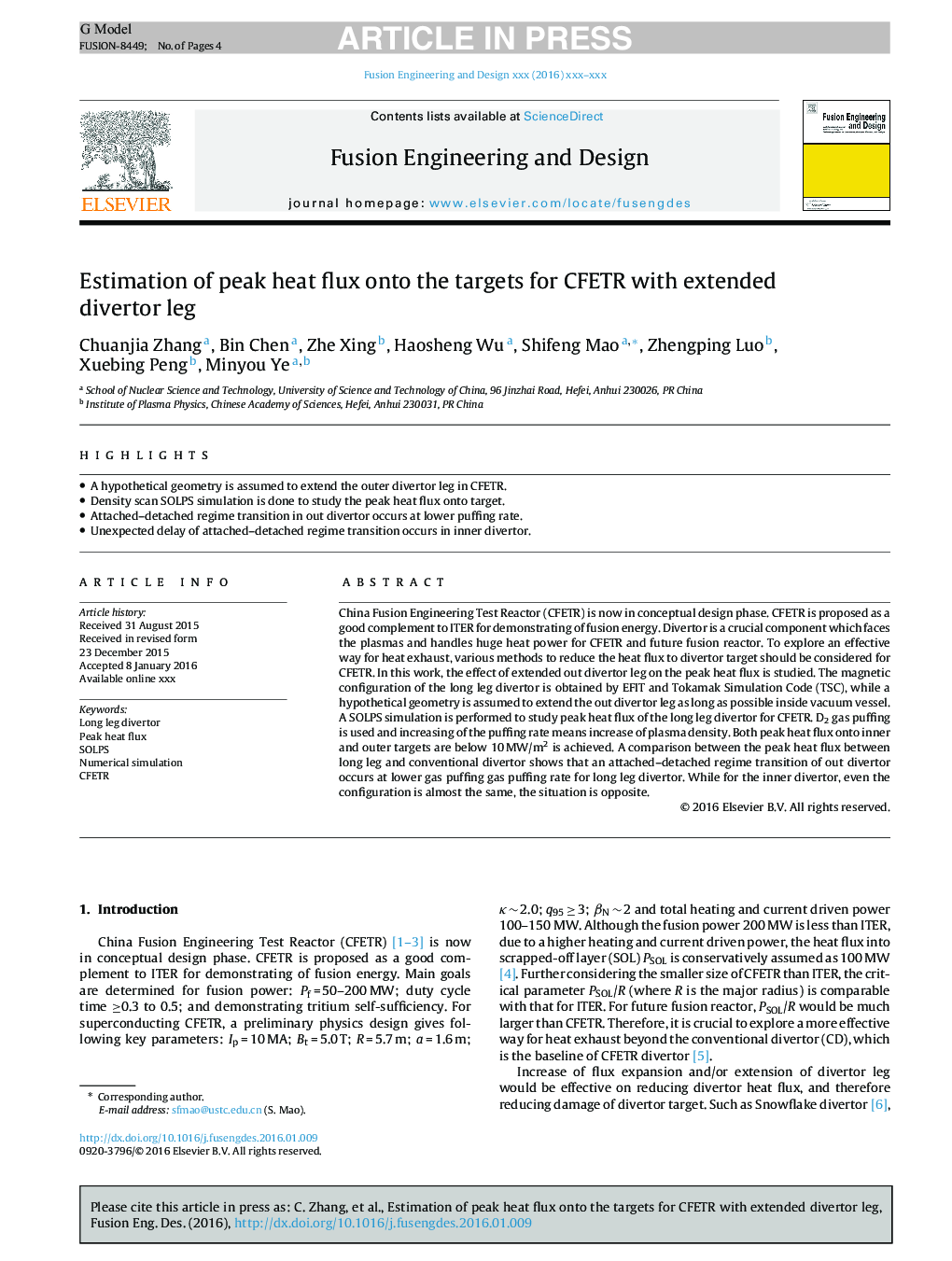| Article ID | Journal | Published Year | Pages | File Type |
|---|---|---|---|---|
| 4921304 | Fusion Engineering and Design | 2016 | 4 Pages |
Abstract
China Fusion Engineering Test Reactor (CFETR) is now in conceptual design phase. CFETR is proposed as a good complement to ITER for demonstrating of fusion energy. Divertor is a crucial component which faces the plasmas and handles huge heat power for CFETR and future fusion reactor. To explore an effective way for heat exhaust, various methods to reduce the heat flux to divertor target should be considered for CFETR. In this work, the effect of extended out divertor leg on the peak heat flux is studied. The magnetic configuration of the long leg divertor is obtained by EFIT and Tokamak Simulation Code (TSC), while a hypothetical geometry is assumed to extend the out divertor leg as long as possible inside vacuum vessel. A SOLPS simulation is performed to study peak heat flux of the long leg divertor for CFETR. D2 gas puffing is used and increasing of the puffing rate means increase of plasma density. Both peak heat flux onto inner and outer targets are below 10Â MW/m2 is achieved. A comparison between the peak heat flux between long leg and conventional divertor shows that an attached-detached regime transition of out divertor occurs at lower gas puffing gas puffing rate for long leg divertor. While for the inner divertor, even the configuration is almost the same, the situation is opposite.
Keywords
Related Topics
Physical Sciences and Engineering
Energy
Energy Engineering and Power Technology
Authors
Chuanjia Zhang, Bin Chen, Zhe Xing, Haosheng Wu, Shifeng Mao, Zhengping Luo, Xuebing Peng, Minyou Ye,
